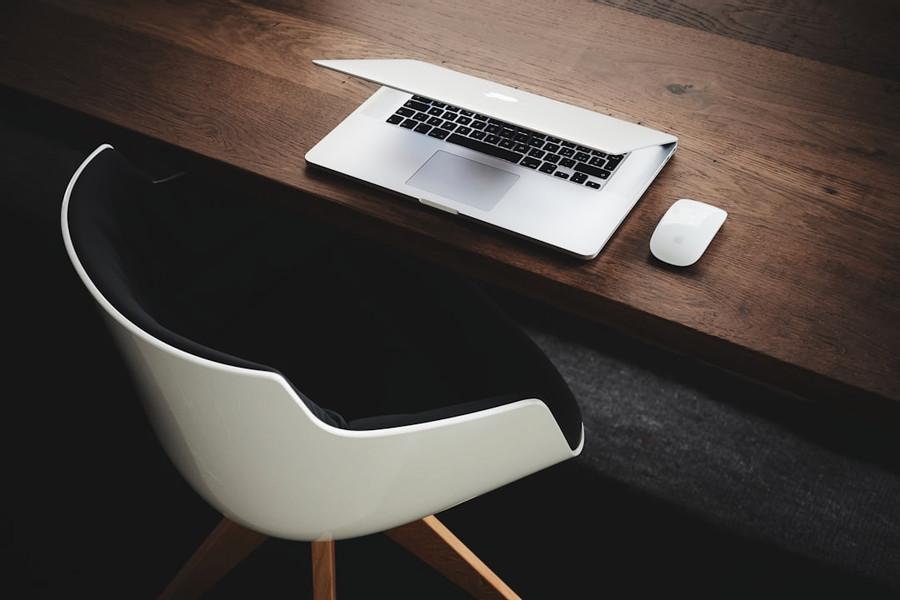Mohamed Byrne's Key Ideas from Office Optional
by Larry English
Ideas, facts & insights covering these topics:
17 ideas
·1.4K reads
3
Explore the World's Best Ideas
Join today and uncover 100+ curated journeys from 50+ topics. Unlock access to our mobile app with extensive features.
Remote Work: The Premise
Researchers predict 73% of teams will include remote workers by 2028, but few companies make building and maintaining their culture with all workers – including virtual ones – a priority.
Companies with remote teams should proactively create a connected culture. When you create a positive company culture, you do more than make work more enjoyable – you gain a big competitive advantage.
Companies with cultures that foster employee engagement see nearly 60% more revenue per worker than average.
33
302 reads
Key Takeaways
- Building a strong virtual culture hinges on trusting your workers.
- Align your virtual culture with your core values and operating philosophy.
- Invest time in screening new hires to make sure they fit your culture.
- Create a training program to spread your culture, and appoint cultural ambassadors.
- Encourage vulnerability to strengthen virtual relationships.
- Use internal and external feedback to assess your corporate culture.
- Enhance your virtual culture by investing in a collaboration tool.
- Become a better virtual worker by adopting healthy habits.
31
186 reads
Defining Company Culture
Culture is the personality of a company. It defines the environment in which employees work and includes both the spoken and unspoken rules for how things get done in a company.
A positive virtual culture requires trust. Employers may worry that their remote workers will underperform, but, in reality, remote workers often work harder than office workers. You don’t need to micromanage employees who work from their homes. Instead, check on their progress regularly so you discover any problems early.
31
106 reads
Building a Strong Virtual Culture Hinges on Trusting Your Workers
Treat remote workers as responsible adults, giving them autonomy and flexibility.
This policy will contribute to their happiness and, in turn, they will feel a greater sense of loyalty to your company, thus building the foundations of a positive culture. Companies that have cultures rooted in trust see several benefits, including a 50% decrease in turnover rates, better stock market performance, and increased worker productivity, innovation and engagement.
30
92 reads
Align Your Virtual Culture with Your Core Values and Operating Philosophy
The culture you create reflects the rules – both official and unspoken – that your company embraces. Before you create a virtual culture, reflect on your current culture. Ask why you provide the services or products you offer and what core values inform the decisions people make at your company. Examine your traditions – which can encompass anything from how you celebrate wins to what leisure activities team members enjoy together. All these things reinforce your culture and values.
30
78 reads
Adding Virtual Components
After you identify and redefine your culture, start adding in virtual components. Everything your company does, from the way you conduct sales calls to the collaboration tools you use, should align with your core culture. Try to be flexible. Understand that remote workers will have different distractions – children interrupting, doorbells ringing – than office workers. Prioritize moments of human connection among your remote workers.
For example, you might create space for informal chats before virtual meetings and encourage – but not require – people to turn on their videos.
31
60 reads
Invest Time in Screening New Hires to Make Sure They Fit Your Culture
Consider which aspects of your virtual and core cultures you can and can’t teach, then hire people who already possess the cultural aspects you value but couldn't teach, the intrinsic aspects of your culture. For example, teaching someone to be kind isn’t easy, so if you and your culture value this trait, screen potential hires to make sure they act with kindness. The teachable aspects of your culture, by contrast, might include certain skills and a core of knowledge about work-related topics, such as delivering projects to clients or working from home more efficiently.
29
61 reads
Create a Training Program to Spread Your Culture, and Appoint Cultural Ambassadors
Few businesses train workers in their culture – more than 60% of companies don’t mention their culture when onboarding new employees. If you want your workers to embody your culture, teach them about it. Consider creating a culture curriculum highlighting the cultural traits you prioritize, such as diversity or collaboration.
If you want a great culture, you have to actually tell your employees what your culture is and what it means to live up to it.
28
58 reads
Tailor To Different Learning Styles
- Make both in-person and virtual learning methods available to workers, since people have different learning styles – some may prefer learning at home, while others prefer learning in a group.
- Hire leaders who embrace your cultural values in their own lives to serve as role models.
- Consider investing in mentorship programs for new leaders to guide them as they learn to adapt to your culture.
30
54 reads
Culture Sharing
- Enable employees to share your culture by inviting a select group of people from varying career levels to serve as cultural ambassadors and share your company culture.
- Make ambassadors responsible for identifying charities your company can support, organizing internal events such as hackathons and providing feedback on decisions that could affect your culture.
28
53 reads
Encourage Vulnerability to Strengthen Virtual Relationships
Virtual relationships can develop into strong connections, just as in-person relationships do in the office, but remote connections may require extra effort. Create strong relationships by making an effort to be vulnerable and encouraging team members to do the same. When people display vulnerability, it triggers oxytocin production in those around them, increasing cooperation and feelings of empathy and trust.
27
50 reads
Bring Your Personality To Work
Consider bringing more of your personality to work: Perhaps you could craft a clever auto-reply or share small details about your life to help your colleagues feel a greater connection with you. Leave time for people to chat about non-work topics before virtual meetings to encourage distant team members to get to know one another.
For example, the virtual call’s facilitator could spur conversation by asking a lighthearted question that prompts people to share details about themselves before the meeting.
28
50 reads
Vulnerability is the secret ingredient and shortest route to building any strong, collaborative relationship, whether your relationship is strictly virtual or in person.
LARRY ENGLISH
27
55 reads
Virtual Misunderstandings
Be mindful that misunderstandings can cause conflicts during remote meetings since people have more difficulty interpreting one another’s tone of voice or body language in virtual communication settings.
- Proactively manage conflict by taking extra time to connect with people.
- If you suspect that someone is upset, check-in via video chat or phone call.
- Decide how often you’d like your team to meet in person – if doing so is feasible.
- If you don’t have a physical office space, consider cost-effective free spaces, such as coffee shops or restaurants.
28
47 reads
Use Internal and External Feedback to Assess Your Corporate Culture
Use all available metrics to measure your corporate culture. Figure out how frequently you’ll gather feedback on your culture and which sources you’ll draw from to make sure you have at least one quantifiable metric you can study over time. External sources – such as web platforms like Glassdoor that allow people to rate their employers – as well as internal feedback systems that use anonymous employee surveys are potent forms of data.
27
41 reads
Enhance Your Virtual Culture by Investing in A Collaboration Tool
Take time to enhance your culture by finding the best collaboration tool(Slack, Teams etc.) to facilitate internal communication and cooperation in your organization. Employees can become frustrated if they lack effective methods for connecting with one another and streamlining their workflow.
The right collaboration platform builds your virtual culture, creates community, connects new hires to your culture, breaks down silos, facilitates multigenerational collaboration, creates greater transparency, improves employee engagement and collects data on how people collaborate.
28
65 reads
Become a Better Virtual Worker by Adopting Healthy Habits
Establish boundaries – Contrary to popular belief, many remote workers work too much.
Choose your workspace carefully – Work somewhere with minimal distractions.
Schedule time for breaks – Take time for activities, such as exercising at midday.
Create your own schedule – Figure out the times of day when you are most productive.
Don’t isolate yourself – Take time to connect with your co-workers, either virtually or in person.
Stay present and focused – Don’t try to multitask during conference calls.
Build relationships – Get to know your teammates virtually.
30
48 reads
IDEAS CURATED BY
CURATOR'S NOTE
The lifting of pandemic-era restrictions paves the way for millions of workers to return to their offices. For many employees, however, this is not an attractive prospect. And considering that talent is scarce, employers must think twice about ordering people back full-time.
“
Mohamed Byrne's ideas are part of this journey:
Learn more about remotework with this collection
How to avoid email overload
How to organize your inbox
How to write effective emails
Related collections
Discover Key Ideas from Books on Similar Topics
1 idea
Work From Anywhere
Alison Hill, Darren Hill
3 ideas
21 ideas
It's the Manager
Jim Clifton, Jim Harter
Read & Learn
20x Faster
without
deepstash
with
deepstash
with
deepstash
Personalized microlearning
—
100+ Learning Journeys
—
Access to 200,000+ ideas
—
Access to the mobile app
—
Unlimited idea saving
—
—
Unlimited history
—
—
Unlimited listening to ideas
—
—
Downloading & offline access
—
—
Supercharge your mind with one idea per day
Enter your email and spend 1 minute every day to learn something new.
I agree to receive email updates














